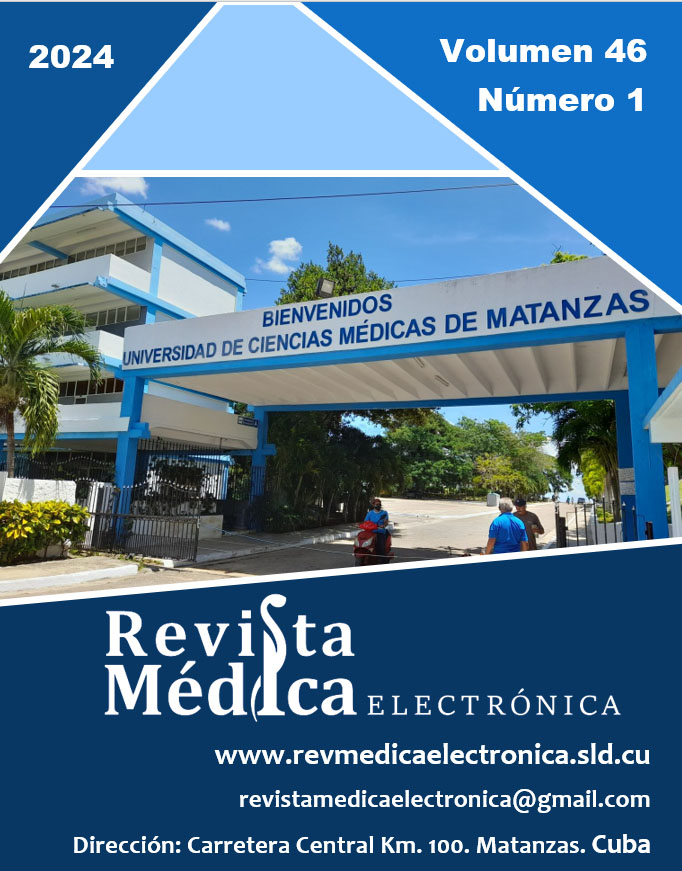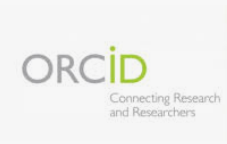Health hearings system for the development of knowledge on preconception reproductive risk. 2020-2022
Keywords:
reproductive risk, risk factors, prevention, level of knowledge, health hearings systemAbstract
Introduction: Preconception knowledge of the risk factors that a couple has is vital for their modification prior to pregnancy and achieving a successful gestation.
Objective: To develop a system of health hearings that contributes to the development of knowledge on reproductive risk and its prevention.
Methods: A development research was carried out in the Community Policlinic Andrés Casallas in the municipality Union de Reyes, in the period from June 2020 to May 2022. The universe consisted of 101 women of childbearing age. The research was carried out in two stages; the variables studied were risk factors associated with preconception reproductive risk and preconception education, in addition to the learning needs, explored through the survey designed. A pilot test was applied and statistical and empirical methods were used to validate the survey.
Results: In the women studied, there it was observed a predominance of environmental risk factors associated to the reproductive risk and a deficient preconception education that makes them vulnerable, as well as a level of knowledge in prevention, evaluated of bad with high felt educational needs, so the components that make up the health hearings system were designed.
Conclusions: The health hearings system, designed in correspondence with the learning needs diagnosed in the women studied, will contribute to the development of knowledge in preconception reproductive risk and to the future planning of gestation.Downloads
References
2. Beltrán Guerra C. Diseño de un Programa de Educación para la Salud de Atención Preconcepcional [tesis en Internet]. Valladolid: Universidad de Valladolid; 2019 [citado 11/09/2022]. Disponible en: http://uvadoc.uva.es/handle/10324/36723
3. Dirección de Registros Médicos y Estadística de Salud. Anuario estadístico de salud 2021 [Internet]. La Habana: Ministerio de Salud Pública; 2022 [citado 11/09/2023]. Disponible en: https://temas.sld.cu/estadisticassalud/2022/10/18/anuario-estadistico-de-salud-2021/
4. Dirección de Registros Médicos y Estadística de Salud. Anuario estadístico de salud 2022 [Internet]. La Habana: Ministerio de Salud Pública; 2023 [citado 03/11/2023]. Disponible en: https://salud.msp.gob.cu/wp-content/Anuario/Anuario-2022.pdf
5. Hernández García F, Robaina Castillo JI, Pérez Calleja NC, et al. Curso electivo para la realización de audiencias sanitarias sobre cáncer por estudiantes de medicina. Educ Médica [Internet]. 2020 [citado 18/12/2022];21(3):177-86. Disponible en: https://www.sciencedirect.com/science/article/pii/S1575181318302146?via%3Dihub
6. Martínez González LE. El sistema de actividades como resultado científico en la maestría en Ciencias de la Educación: ¿ser o no ser? Matanzas: Universidad Pedagógica Juan Marinello; 2009.
7. Llanes Torres HM, García Canosa D, Yedra Sánchez M, et al. Intervención educativa sobre infecciones de trasmisión sexual en adolescentes. Rev Cubana Med Gen Integr [Internet]. 2016 [citado 09/10/2022];32(4):1-9. Disponible en: http://scielo.sld.cu/scielo.php?script=sci_arttext&pid=S0864-21252016000400008
8. Pupo Ávila NL. Promoción y educación para la salud. En: Álvarez Sintes R. Medicina General Integral. 3ª ed. La Habana: Editorial Ciencias Médicas; 2014.
9. Quintero Paredes PP. Caracterización del riesgo reproductivo preconcepcional en las mujeres en edad fértil. Arch Méd Camagüey [Internet]. 2021 [citado 18/12/2022];25(3):377-90. Disponible en: http://revistaamc.sld.cu/index.php/amc/article/view/7795
10. Rondón Carrasco J, Morales Vázquez CL, Fajardo Rodríguez M, et al. Educar para mejor control del riesgo reproductivo preconcepcional [Internet]. Granma: Segundo Congreso Virtual de Ciencias Básicas Biomédicas en Granma “Cibamanz”; 2021 [citado 18/12/2022]. Disponible en: https://cibamanz2021.sld.cu/index.php/cibamanz/cibamanz2021/paper/viewFile/328/248
11. Moreira-Díaz LR, Palenzuela-Ramos Y, Gamboa-Díaz Y, et al. Caracterización de mujeres con riesgo preconcepcional en un consultorio médico. Univ Méd Pinareña [Internet]. 2020 [citado 11/11/2022];16(2). Disponible en: https://www.redalyc.org/journal/6382/638266622003/638266622003.pdf
12. Rivero Torres J, Manning Ávila EA, Massó Bombalé G, et al. Factores de riesgo reproductivo preconcepcional en mujeres de edad fértil del área Este de Guantánamo, 2020. Gaceta Médica Estudiantil [Internet]. 2020 [citado 08/02/2023];1(2):104-12. Disponible en: https://revgacetaestudiantil.sld.cu/index.php/gme/article/view/24
13. Carmenza OA, Sánchez Cedeño MN, Preciado Acosta YM, et al. Conocimientos en salud sexual y reproductiva en estudiantes de una institución educativa de Cali Colombia 2020-2021. Edu-física.com. 2022;14(29):114-25. DOI: 10.59514/2027-453X.2646.
14. Riverón Morales FF, Vázquez Jorge Y. El principio de la autonomía para el control del riesgo reproductivo preconcepcional [Internet]. Granma: Segundo Congreso Virtual de Ciencias Básicas Biomédicas en Granma “Cibamanz”; 2021 [citado 04/02/2023]. Disponible en: https://cibamanz2021.sld.cu/index.php/cibamanz/cibamanz2021/paper/view/129
15. Ortega Pino EN. Diseño de una estrategia educativa para el control del riesgo preconcepcional en mujeres en edad fértil. Consultorio 12B de Medicina Familiar y Comunitaria. Centro de Salud Pascuales. Año 2021 [tesis en Internet]. Guayaquil: Universidad Católica de Santiago de Guayaquil; 2021 [citado 04/02/2023]. Disponible en: http://repositorio.ucsg.edu.ec/handle/3317/18722
16. Pupo Ávila NL. La comunicación efectiva. El mensaje. Medios de comunicación. La Habana: Escuela Nacional de Salud Pública; 2007.
17. Pérez García A, Blanco Pereira ME, Hernández Suarez D, et al. Educación preconcepcional en prevención de fisurado labial y palatino, policlínico “José Jacinto Milanés”, julio 2017-abril 2018 [Internet]. La Habana: Convención Internacional Virtual de Ciencias Morfológicas “Morfovirtual 2018”; 2018 [citado 11/11/2022]. Disponible en: http://www.morfovirtual2018.sld.cu/index.php/morfovirtual/2018/paper/viewPaper/301
Downloads
Published
How to Cite
Issue
Section
License
All content published in this journal is Open Access, distributed under the terms of the CC BY-NC 4.0 License.
It allows:
- Copy and redistribute published material in any medium or format.
- Adapt the content.
This will be done under the following terms:
- Attribute the authors' credits and indicate whether changes were made, in which case it must be in a reasonable way.
- Non-commercial use.
- Recognize the journal where it is published.
The copyrights of each article are maintained, without restrictions.






